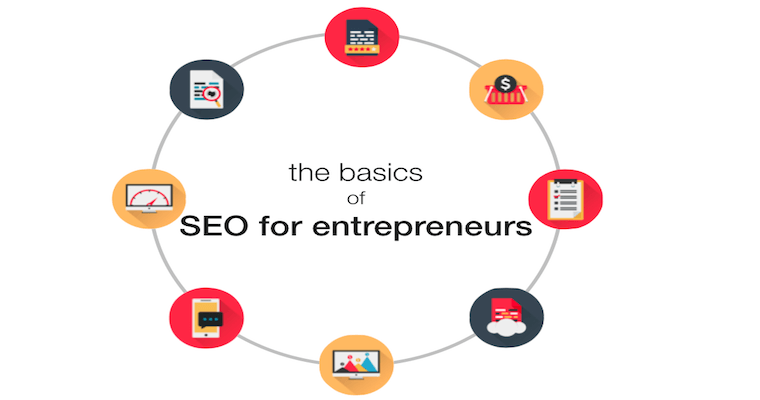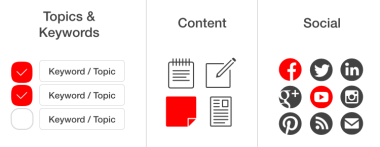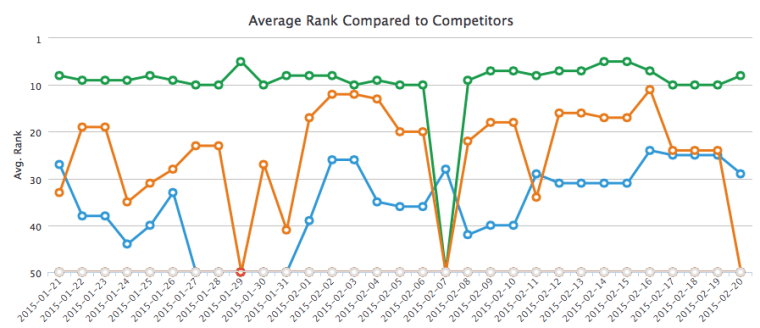Creating revenue with a small amount of resources and the unlimited number of tasks associated with running a business are challenges every entrepreneur faces – and they aren’t likely to change. You are likely short on time as you try to get your brand off the ground, create findability, and build an organization – which means you lack the bandwidth to learn and execute the daily tasks associated with every role.
When it comes to SEO, a few important basics can greatly improve your presence in the increasingly crowded online space.
Since SEO has evolve to include a content-centric view of rankings and incorporate social media and local engagements, there are fewer shortcuts and a larger focus on quality. While it sounds time-consuming, quality content has benefits that reach beyond SEO, as good content is useful across all marketing mediums, and forces you to think through messaging from a topic and keyword perspective – ensuring you’re honing in on what actually matters.
Below are a few things I think are important:
Know Your Audience(s) and What They’re Looking For
This is a helpful exercise regardless of whether or not you care about SEO. You’ve got to know who would buy your products or services, and what they’re looking for, in order to find them. Your initial assumptions may be accurate, but you may also be missing things that could drive additional traffic, potential messaging opportunities, or new market segments.
You’ll want to do some research up front (if you haven’t already) and map an audience to the keywords, topics, and phrases they’re using in and around your industry. It’s also helpful to map the keywords and topics back to your content and the ways people are sharing it so you’ll know what types of content perform best on each channel.
If you don’t have the time to go through that exercise in its entirety, a look at how people are currently finding your content using your analytics provider (like Google Analytics) is a good start.
Map Competitor Content
If you’re looking for increased traffic, and not just any traffic but relevant traffic, you need to know what you’re up against. Mapping out your competitors’ content will help you understand what’s already out there, what’s missing, and how similar products and services are being messaged.
To get started, create a spreadsheet with the following information:
- The competitor name (e.g. Acme)
- The keywords / topics that you’re targeting that they are also ranking for (e.g. “anvils”)
- The content they’ve created that is currently ranking above yours or in the top 10 on search engines (e.g. “how to trap a roadrunner” – be sure to include the title of the content as well as the URL.)
- Note any key elements of the content such as videos, images, long-form content, lots of discussion on the post, etc.
Armed with this information, you can better allocate the limited time and resources you have to create content that truly stands out against the competition.
Certain tools will do this for you automatically, and will also highlight things like search and CPC data, which can be a great option if you have a highly competitive or volatile market.
Create a Content Repository
Creating increased traffic and revenue comes from having the most useful content for your audience to consume. Whether that’s in the form of landing pages, blogs, email, social media, ads, or other assets – you’ll need to focus on the findability of your specific content. Having a content idea repository will ensure you’ve always got a list of topics and fresh information for your audience.
In your repository should be the following:
- Ideas for new content gathered from forums, Q&A sites, LinkedIn, etc. (Questions around your industry, products, and marketplace can be great blog posts, FAQs, Slideshares, videos, landing pages, and email subjects.)
- Content ideas to ensure you’re on par with your competitors when it comes to covering topics and questions in the industry and around your company.
- Unique messaging for your brand and products based on the keywords from item number one.
Once you’ve done this, map keywords and topics back to each content topic to ensure you’re writing with those in mind when it comes time to create the content.
Set Keyword Expectations and Manage Them Accordingly
You’re going to want to run your keywords and topics through a tool like Google’s Keyword Planner to make sure the topics and keywords you have chosen have enough search volume and potential traffic to warrant time spent. Be sure to take into account the relevance of the search to your audience. The narrower the topic focus, the lower the traffic typically, but this is often offset by the accuracy and interest of the audience.
For example, a broad search might be “running shoes” which has a very high volume and competition for space. You may not want to create content just for “running shoes”. Instead, consider a focus that maps back to your content ideas and create keywords and topics such as “women’s trail running shoes.”
Set Up Your Site & Content Structure for Success
As you create content, you’ll want to make sure each page is optimized for crawlability, page speed, mobile friendliness, and overall findability. Initial investment in a site audit or recommendations for establishing a few initial best practices will pay out results ten-fold.
A few of my favorite resources are:
- The Moz Beginners Guide to SEO, specifically Chapter 4 on The Basics of Search Friendly Design and Development
- Creating Landing Pages that Stick
- Using Video in Search and Content Marketing
Depending on your budget and how much site content you’ve already created, you may want to conduct a site audit of your current content or use a recommendations tool that will highlight current issues and help you update them.
Track Progress
You’re going to want to keep an eye on the keywords and content you’re creating and to track competitor movement in the space. A lot of sudden movement by a competitor on a group of keywords could signify intent to increase marketing efforts in that area, add additional products that competes with yours, or other issues to be aware of in your space.
For example, if you are currently responsible for marketing mens trail running shoes at Nike and you see a large increase in rank by Reebok for the same trail running shoe keywords – you might want to take a look at the content they’re creating and the marketing movement they’re making with your audience.
Start using a rank tracking tool for your site, even if you don’t have all of the content set up yet, to keep an eye on how you’re performing. If you choose an integrated analytics tool you can track rank, keyword performance, social analytics, and other items all in one place so you’ll be able to better understand how your content affects your overall traffic and revenue.
Make Time for Adjustments & Optimizations
As you track progress and release new content, you should start to see what works well for your audience, whether it’s specific channels, content types, or messaging (or a combination of the three.) From there, dive back into the keywords and topics and get specific about each keyword list for your updated audience groups, marketing channels, etc.
The more you can narrow down your marketing efforts, the better your conversions will be. For example, if you have a younger audience segment that uses Twitter and Instagram – look at what topics and keywords relate to that audience and then match your Instagram content to those. If you have another audience segment that focuses on Pinterest or Slideshare, see what their specific needs and topics are and focus the content you create for those mediums on those keywords.
This is especially important when considering mobile content consumption, as people are often accessing apps and sites, and asking different questions when searching on a mobile device versus a tablet or desktop.
At the end of the day, focusing on quality content that can be easily found by your target audience will benefit all of your marketing and sales efforts – so spend a little time on the things above and the rest will fall into place.






